Metropolis: The Masters of Cinema Series
There are certain films come with a weight of expectation as there has been so much written and said about them that you watch them expecting a masterpiece; these would include movies like Citizen Kane, Tokyo Story and Metropolis. Regarded as the granddaddy of science fiction films which has influenced everything from Blade Runner to Dark City and The Matrix and even entering the world of music videos such as Radio Gaga by Queen and Madonna's Express Yourself, Metropolis is a giant movie that has flummoxed film historians since its release in January of 1927.
When it was shown at the Ufa theatre, it bemused critics and regular audience members alike causing Ufa to take the film, drastically cut it down and release it in a truncated and, hopefully, more audience friendly format. It failed and Metropolis has gone down in history as one of the biggest flops ever, having cost an estimated 5,000,000 Reich Marks but only taking just over 75,000 Reich Marks. It was an enormous production, taking years and involving an estimated 36,000 extras (1,100 of whom had their heads shaved) and 200,000 costumes, going way over budget and well over schedule. In the end, Ufa didn't really know what to do with this three-hour behemoth and neither did Paramount in the US who, under the supervision of playwright Channing Pollock, cut it down to a more 'reasonable' running time which then found its way back to Germany and was trimmed even more.
In 1984, filmmaker Giorgio Moroder released a 90 minute version of the film in colour with music by the likes of Freddie Mercury, Pat Benatar and Bonnie Tyler. Despite the almost universal panning that Moroder's film received, it did raise the attention of Metropolis in the public eye and reminded people that there was a complete version out there somewhere, it just needed to be restored and made public. In the early 21st century, a raft of new footage was found which was incorporated into the existing footage and released around the world with The Masters of Cinema Series releasing their version in 2005. Then there were rumours that there was a complete print in, of all places, Buenos Aires which had belonged to a private collector and had subsequently been seized by the Argentine state. The rumours were, to most film lover's delight, true although some of the nitrate had been copied onto 16mm to save storage costs and reduce the fire risk.
Eventually this found its way to the F.W. Murnau Stiftung, which owned the rights and had restored many other silent films from Germany, and the laborious restoration process began. Unfortunately, the film had not been treated prior to the 2K digital photography so all of the scratches and dirt on the film was now kept for posterity and the most they could do was a little bit of digital cleaning, removing most of the detritus. Unfortunately, because the missing material was in 16mm, it had a different aspect ratio to the 35mm footage and, in any case, some of it was so badly damaged that it was beyond repair so intertitles were necessary to explain what was happening in the missing scenes.
Anyway, enough about the history and onto the film itself. Metropolis is set in a dystopian future in which the rich live a blissful existence in the titular city which is kept running by the workers. Unbeknownst to the people on the surface, the workers live and work underground with their lives split into 10 hour shifts and they remain completely ignorant of what is happening on the surface and precisely why they are doing what they are doing. Supervising all this is the architect of the city, Joh Fredersen whose entire family is his son, Freder, as his wife, Hel, died in childbirth and was not only the apple of his eye, but also the woman on whom Fredersen's chief scientist, Rotwang, had been in love with and hopes to create a robot which he can make to resemble Hel.
Down in the workers' city is a woman, Maria, who is almost a religious figure to the workers, who believe every word she says, including a promise that one day there will be a mediator who will come between the head (Fredersen) and the hands (the workers) and be the heart to link the two so that harmony may reign. An unexpected meeting between Maria and Freder sees Fredersen's son fall in love with her and swaps identities with one of the workers, Georgy (worker number 11811) agreeing to live and work underground whilst Georgy lives in his apartment so that no one will notice that neither are missing. Unfortunately, The Thin Man, Fredersen's chief spy, finds out and demands from #11811 where Freder has gone. When he confesses that he is in the workers' city, The Thin Man set about trying to find him before Fredersen discovers the truth.
Meanwhile, Fredersen has learnt the power that Maria wields and persuades Rotwang to capture her and impose her likeness on his robot and, although this will mean giving up on making a new Hel, Rotwang agrees. Using all of his wiles and contacts, he kidnaps Maria, straps her to a table and, using a vast array of scientific equipment, gives the robot her likeness. In order to prove that she is convincing, Fredersen puts on a party for the more well-to-do in Metropolis with the robot Maria putting on what can only be described as a strip show. The men are all utterly transfixed and Fredersen knows that he has a weapon that can quieten the murmurings of discontent below once and for all.
Rather than just have the robot Maria go down and tell the workers to accept their lot and get on with their jobs quietly and unquestioningly, Fredersen decides that the robot Maria should go down and stir up enough hatred that the workers will revolt and destroy their city. When the rioting begins and the underground city begins to crumble, Fredersen learns that his son is down there but decides to press on with his plan anyway. Meanwhile, the real Maria has escaped from Rotwang's clutches and has made her way down to find Freder only to find that the water mains and reservoirs have burst and the city is collapsing and quickly filling with water.
I thought Metropolis was a masterpiece the first time I saw it even though it was perhaps 30 minutes shorter than Lang's vision and there was always something strange about events that seemed to jump from one thing to another without a proper transition and have a dramatic cut rather than a dissolve. In any case, I've always considered it one of the greatest silent films ever made so, when I heard of the find in Buenos Aires, I was utterly intrigued by what was missing from this film which I love and consider to be a truly great film.
What has been added makes the whole film flow a great deal better than previous releases and includes scenes that make certain events make much more sense. Although you have to live with the dropout in quality and sudden switches from a beautiful 35mm transfer with terrific clarity to something with a different aspect ratio and a great deal of scratches, it doesn't really matter as I, for one, was so engrossed in the film that, after a while, I didn't actually notice the switches in quality as I was so caught up in the story and the trials and tribulations of Freder, Maria and the workers.
What makes Metropolis such an endearing film is the huge amount of detail that Lang put into the architecture as well as the religious and political subtext. It is easy to see the Christian iconography but there are many allusions to Judaism such as the Star of David on the wall and the Moloch Machine (named after an ancient Jewish God) together with the myriad scrawlings on the walls of Rotwang's study and laboratory which marks him down as an alchemist and believer in many different religions and other forms of worship. In terms of politics, it is clear that Lang is almost creating a prophecy of what happens when the working class are herded into a confined environment and the imagery when the shaven headed workers are forced into the fires of the Moloch Machine is quite disturbing to watch when you consider the events on mainland Europe some 15 years later.
Finally, I must say that this is one of the most anticipated releases of the last two years and it didn't disappoint me one iota -- it is a quite brilliant film that is even better in this longer cut that is closer to the film premiered in January 1927 than anything we've seen before.
The Disc
Extra Features
The first on the list is a commentary with David Kalat and Jonathan Rosenbaum who each have their own specialty when it comes to Metropolis and silent films so they are able to talk well for the entire running time providing some fascinating insights about the way the film was made, what happened after 1927 and how this version compares to that which premiered over 80 years ago.
Die Reise nach Metropolis, which translates as Metropolis' journey, is a fascinating 53 minute piece which goes into quite some detail was exploring what happened to the original negatives in 1927 and how they ended up using something that was found almost accidentally on a mass of shelves in Buenos Aires. Most of the contributions come from a German film restorer who admits that, when he heard about the find in Argentina, said he wasn't interested as he assumed it was just another cut down and butchered negative that had been distributed in Argentina along with the others in North and South America.
There is also a 2010 re-release trailer and a 56 page booklet which I've only seen as a PDF that is better than the usual Masters of Cinema booklet with reviews, articles and restoration notes. It is a fascinating read and I look forward to reading the proper paper version.
The Picture
Although I have the Blu-ray on pre-order, I was very interested to see how the standard definition picture looked and I have to admit that the quality is exceptionally good when it comes to the picture taken from the 35mm negative. I was fearing the worst about the newly inserted footage but was surprised at just how well it fits into the film and after a while, I just accepted it and didn't really notice when it switched on to the other as I was too involved in the story.
The transfer is extremely clear with amazing chiaroscuro photography and phenomenal sets that don't really look like models or things that have been painted on glass and inserted into the shot using mirrors as part of a double exposure process, known as the Schüfftan process. It is an immensely clever filmmaking technique that shows that you don't need to rely on green screen and CGI for everything and you can make do with mirrors, miniatures and models.
Fritz Lang is a man who famously said "I don't know what expressionism is" and he was either telling the truth but managed to make a number of films with expressionist design with his art department or he was simply lying as the evidence in this film points to a man who knew exactly what expressionism was. One only need to look at the contrasting offices of Fredersen and Rotwang to see that one clearly reflects a man whose mind is very ordered and organised and the other is the domain of a scientist whose mental state is very strange and slightly insane.
The Sound
The DVD has Dolby Digital 2.0 stereo or 5.1 surround and both do a tremendous job with the sound which is really just the original composition by Gottfried Huppertz, specially re-recorded for this release, as there is no dialogue or other sounds. I have to admit that the music sounds a great deal better when coming from the centre speaker and all of the surrounds as it swells, swirls and utterly immerses you.
There is no problem if you just use the stereo track which is how audiences would have heard the music in 1927 but, oddly, I found it perfectly fine to listen to a late 20th century way of presenting sound accompanying something made in the first third of the century. It may be incongruous but you soon settle into it and don't really bother with the logistics behind the sound as you just let the music take you with it and really adds to the movie.
All of the intertitles, including those describing what is on the scene where no footage is available, are in German but they are well subtitled in English which makes the film easy to follow as they are free from spelling and grammatical errors and stay on the screen long enough for you to read all of the text before they disappear.
Final Thoughts
Metropolis is a masterpiece of the silent age and it is a real shame that it has taken this long to get something that is probably 95% of the original print and what Fritz Lang originally wanted audiences to see back in 1927. It is a very well written story by Thea von Harbou and the screenplay by her and (her then husband) Fritz Lang has lasted extremely well so doesn't really seem silly or dated over 80 years later. If there is a weakness, it is the acting which is more of the histrionic variety than the verisimilitude school of thought which advocates subtlety rather than grand gestures.
In any case, this is a release that has been anticipated by many people for a very long time, and for good reason as this is a phenomenal film that has a fine commentary and should be on the 'must have' list for anyone interested in silent film and, in particular, Metropolis.
You have the choice to buy this version on DVD, a Blu-ray release or a limited edition Steelbook version containing both the DVD and BD. If you have the equipment, I would go for the BD as film contains so much information -- even more that would fit on a dual layer BD -- that you may as well go for the format that will show the picture in as much detail as possible and the sound at as high a bitrate as you can possibly manage.

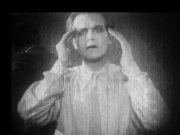


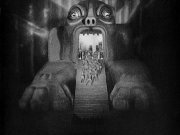





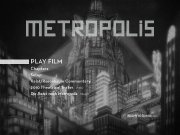




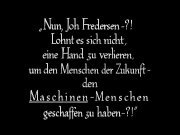
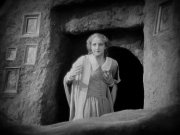
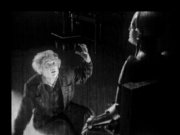


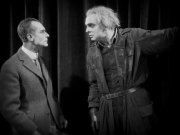
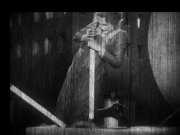



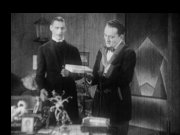








































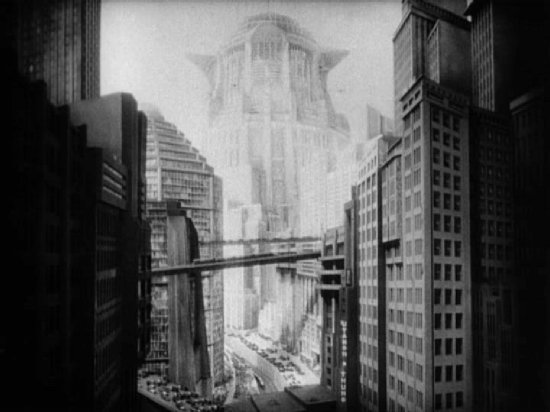





Your Opinions and Comments
Be the first to post a comment!